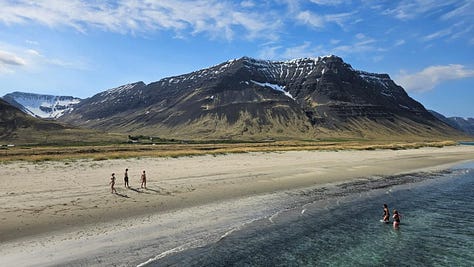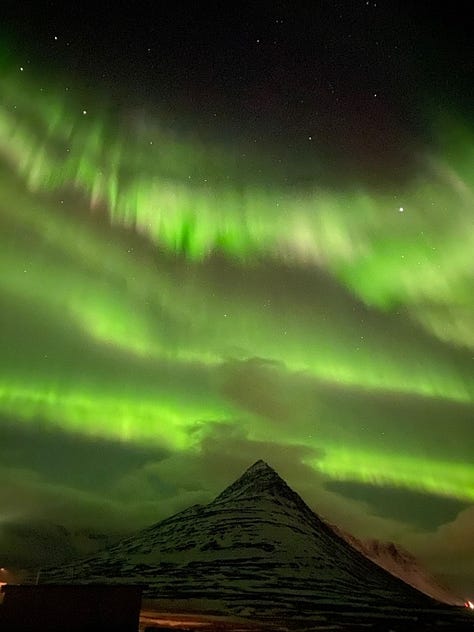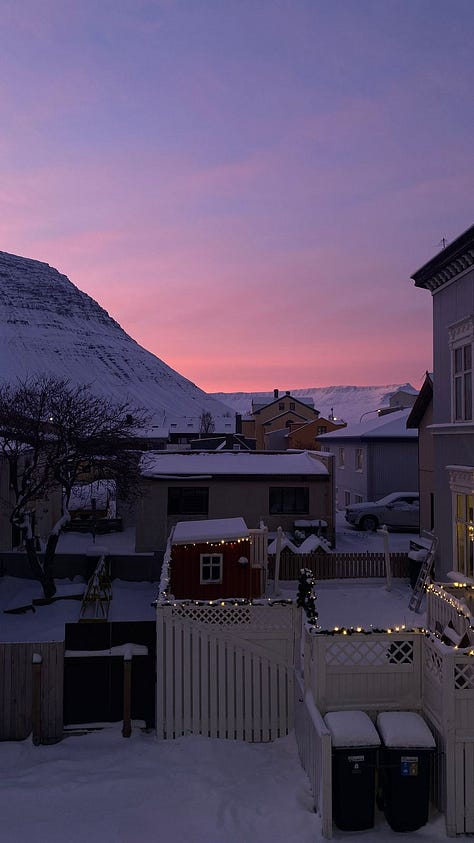Birkenstocks and five year plans
About how a small town quickly became home — and how the wild nature surrounding it cleared my head and calmed my soul.
The remoteness of Ísafjörður is best felt in the seven hour drive up north from Reykjavík. There is a short flight that can take you there too, and that’s how I first arrived. Landing directly into the fjords was like entering another world, and the small airport certainly sets you up for the size of the town. That sense of being cut off doesn’t become clear to you though until you look for your favourite product in the supermarket or try to ship anything here. The Westfjords are often left off of people’s Iceland itinerary — you have to leave the ring road behind and brave mountain passes, and most people do not take the time. With snow between September and April, these mountain passes often become a daunting task. When you do make the drive though, I promise it’s worth it. If you manage to leave the ten two-lane roundabouts safely behind you (the inner lane has priority!), you will begin your journey with the ocean on your left and the mountains on your right. You start out on the ring road and only have to remember to take two exits. The mountain passes are full of waterfalls and rivers. The last three hours are spent weaving in and out of the fjords. If you do the drive anywhere from June until September, you have a good chance to see whales from the shore.
The size of Ísafjörður plays a huge role in the charm of the place. While you might think that a low population number means less social interaction, it’s quite the opposite. Yes, most of your social interactions are with the same group of people. In a big city you could work in the same big office building as someone and never meet, but here there are simply not enough places to go. You’ll run into your classmates at the gym and see your volleyball teammates at the supermarket. You essentially cannot go on a walk around town and not see people you know. People also assume more of a closeness, even though you have not yet met. People help you out and trust you. No one locks their doors. Everyone offers shared rides. It instantly makes you feel like you are part of the community. Of course, the fact that everyone knows each other, and each other’s business, can get old. There is no anonymity. This has not felt very heavy for me, perhaps because the town itself does enjoy anonymity within the world. Where Brussels was often the stage of the world’s news, people are unlikely to have even heard of Ísafjörður. At times, the forced proximity creates great opportunities for growth. You cannot avoid people, you will have to work together with people you might not have chosen in the first place, or talk through any conflict that might arise. I tend to trust a first impression, but these experiences have taught me to give things more time — often leading to unexpected connection.
When you get ready to study here for a year, the university centre shares a student handbook with you. It is full of tips for new students, such as a packing list that includes ski goggles to walk to school with in case of heavy, almost horizontal rain, spikes for under your shoes, a sleeping mask for the months in which the sun refuses to set and earplugs for the seasons in between with extremely loud wind raging through the fjords. There is a chapter called “the dark times”, that tries to prepare you for the two months you are not able to see the sun. Those days come with about three hours of day light, but because of the mountains the sun does not manage to show herself.
Living with the extreme weather has been another beautiful and unique experience. One of my favourite rituals at the university was swapping my shoes for the Birkenstocks I stored there. Everyone would come in from their ten minute walk through the elements, take off their wet shoes and coats and change into slippers. Sitting in class felt like sitting in your own living room. Rocking socks and Birkenstocks at university certainly was not in my five year plan (all five year plans have been thrown out of the window, anyways). However, when the first snow fell at the end of September, only a month after I had arrived, I did have a moment of realization. I signed up for eight months of winter, darkness, and road closures that make it impossible to leave town. But, I also signed up for beautiful snowy mountains, icy fjords, and of course, the northern lights.
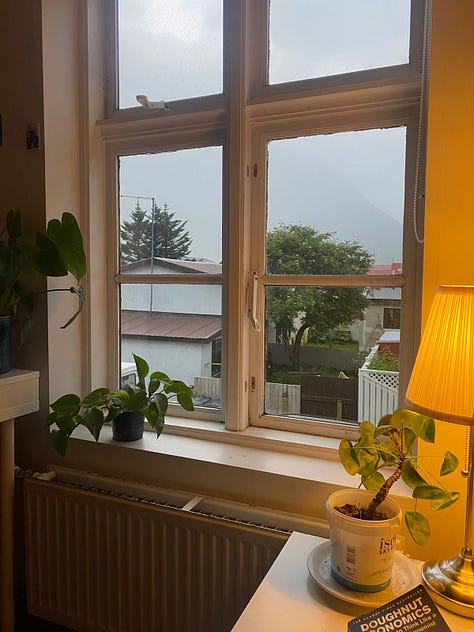
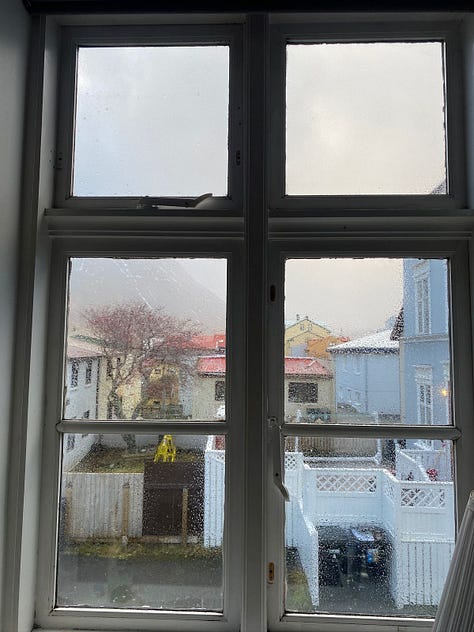
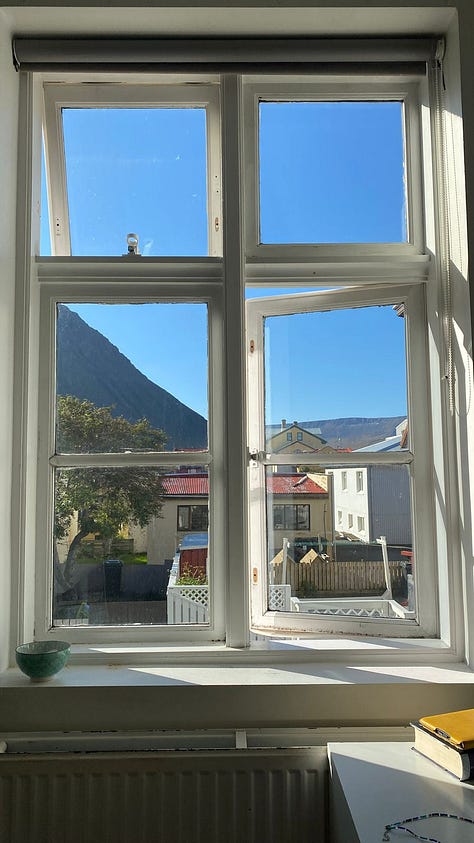
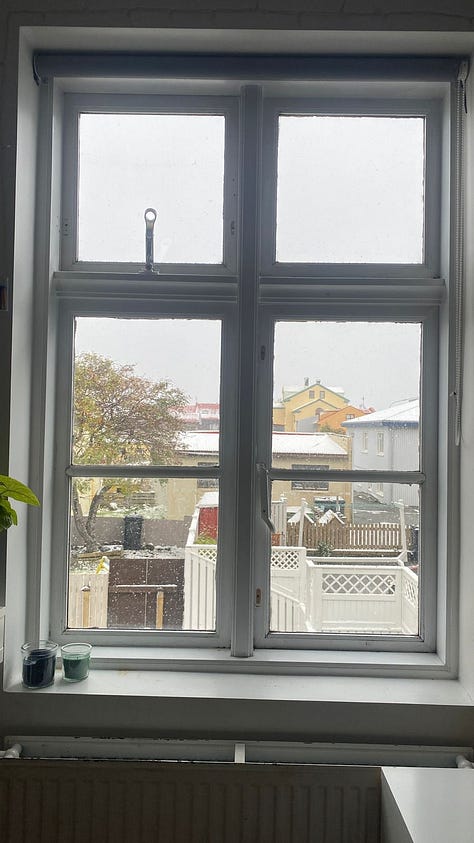
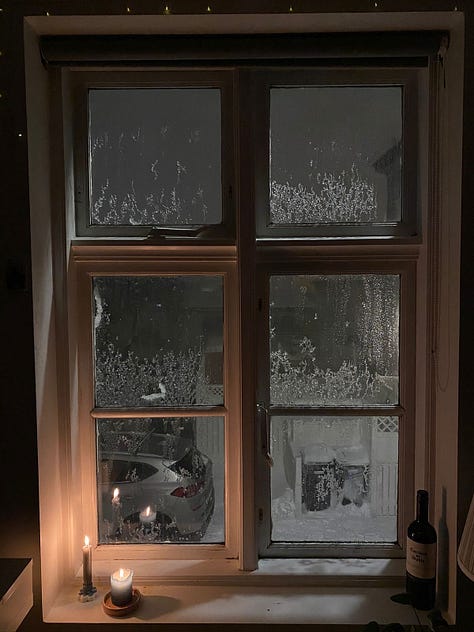
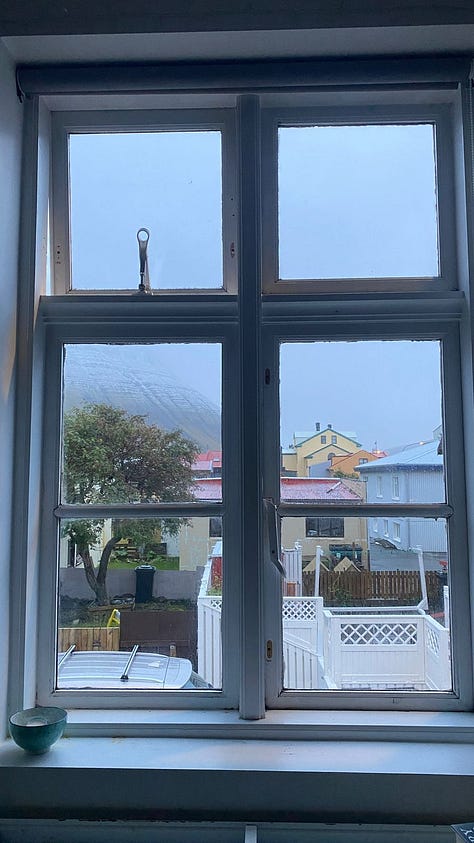
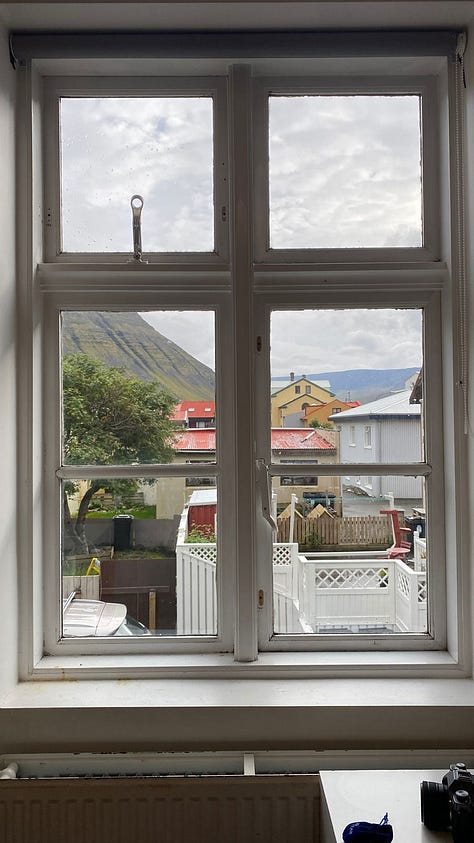
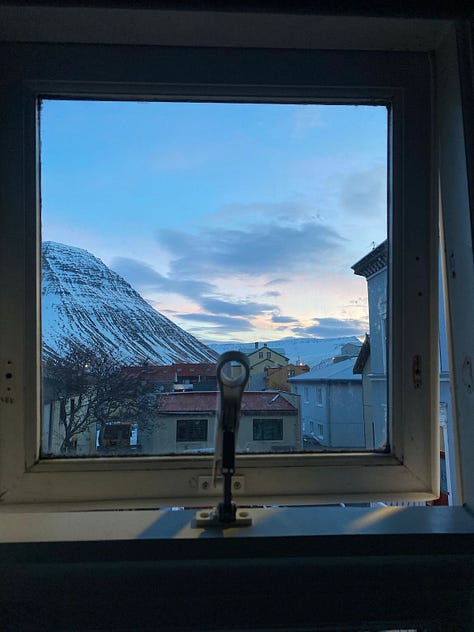
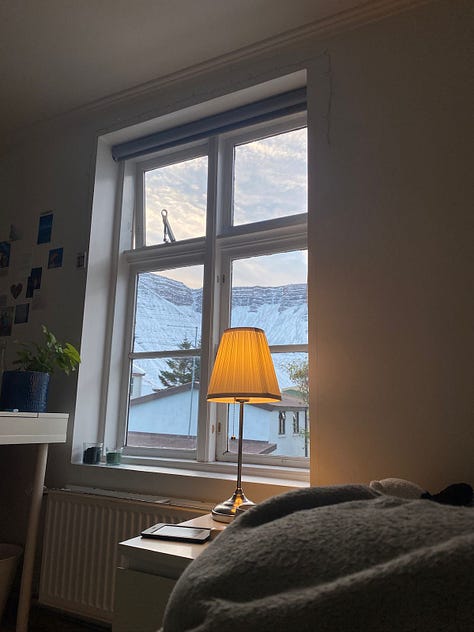
The weather plays a major part in your day to day. Right now, I am writing to you surrounded by mountains disappearing in a volcanic haze. This is the twelfth eruption on the Reykjanes peninsula since the series started in 2021. The town of Grindavík was evacuated. Only two weeks ago I camped there for a night, and now that area is inaccessible. The wind has pushed the bluish volcanic haze all over the country to the Westfjords. It has been special to go out on to the water the past few days, and see the whales float through the mist.
At the end of March we won our final volleyball match and with that the league we had played in all season. This year’s winter had been relatively mild, if I am to believe my Icelandic teammates. But as we stepped outside after celebrating our victory, the snow had returned. One of the mountain passes between Reykjavik and Ísafjörður had closed, and we could not go home to make our Monday classes. All that to say, the environment is extremely unpredictable and regularly makes the final call on your experiences. In this case, it worked out great and we got an extra night to celebrate in Reykjavik before driving west safely the next day.
In fact, it seems to work out most of the time. A big aspect of that is the refusal of Icelanders to plan anything too far ahead. There is simply no use in saying you will host a barbeque in two weeks, decide whether to play soccer or ice hockey over the weekend, or plan your hike too far in advance. Depending on the weather you might decide to host a brunch, play beach volleyball or go to the swimming pool instead. As you can imagine, the Dutch in me refused to go along with it almost all of the time. Even now, as I’m in the final stage of grief, acceptance, at least most of the time, I find it hard to change my mindset. But here, this thinking has seeped through every aspect of life. Icelanders describe it with the words Þetta reddast — meaning it will work out. It is the northern version of the Kenyan hakuna matata, a mindset I dealt with in very similar ways. The reality is that the elements, the weather, are a key part of life and there is nothing I can do to change it. To plan less, go more with the flow, let it all work itself out. It is a lesson I’m still learning.
The awe inspiring natural beauty of Iceland, and getting to spend time in it, was one of the main reasons I came. Iceland’s wild nature is often described as otherworldly. If you ask me, there is nothing otherworldly about it. It is our world, our home planet, from one of its best, wildest, loveliest sides. That’s precisely what makes it special. I have not been starved for beautiful, wild nature and impressive wildlife during my year in Kenya. I could write pages about that too (and I just might). But the northern wilderness and the freedom it projects resonates deep within me. Finishing a shift at the restaurant and finding northern lights dancing all around you as soon as you step out the door, driving through the fjords and seeing a whale fluke right next to you, walks through the snowy mountains after class. These are the moments that have calmed my soul, creating space to slow down and focus on what I find important.
I can’t believe I have to leave this place in a week!
